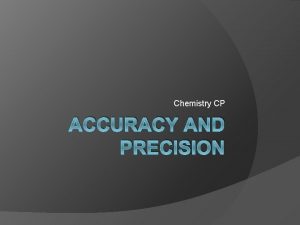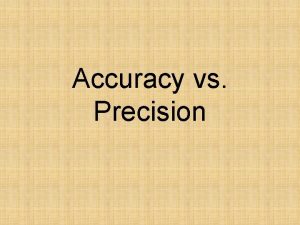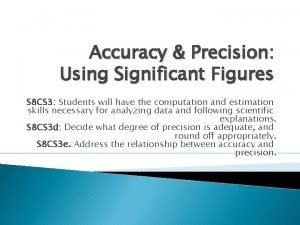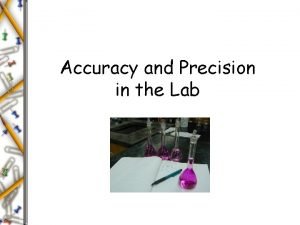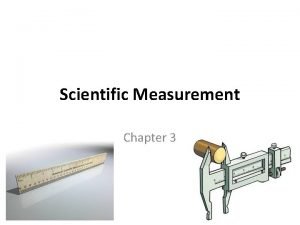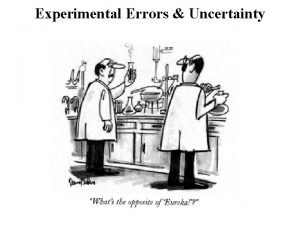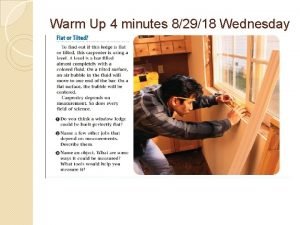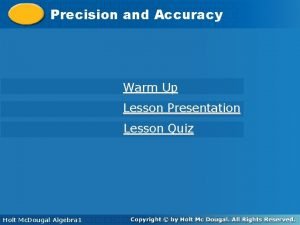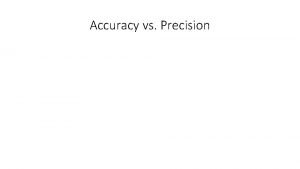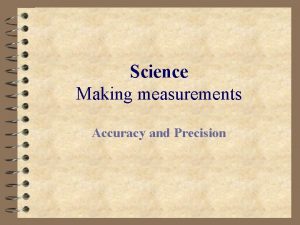Precision and Accuracy When making measurements a scientists









- Slides: 9

Precision and Accuracy • When making measurements, a scientists have to evaluate their data. • One way is to look at the precision and accuracy. • Precision is how tightly grouped the data is. • Accuracy is how close the overall data is to the target value or theoretical value.

precise but not accurate but not precise both precise and accurate

• Ronald, Kevin, and Paul perform an experiment to determine the value of acceleration due to gravity on the Earth (980 cm/s 2). • The following results were obtained: Ronald - 961 ± 12 cm/s 2 Kevin - 953 ± 8 cm/s 2 Paul - 942 ± 4 cm/s 2. Which results are more precise and which are more accurate?

• The known value of the acceleration of gravity is 980 cm/s 2. • The closest result to that is Ronald’s at 961 cm/s 2 so his results are the most accurate. • While Paul’s results are farther from the known value, his results are the closest to each other at ± 4 cm/s 2 so his results are the most precise.

• To assure precision and accuracy, instruments used to make measurements need to be used correctly. • This is important because one common source of error comes from the angle at which an instrument is read.

• Scales should be read with one’s eye directly above the measure. • If the scale is read from an angle, as shown in figure (b), you will get a different, and less accurate, value. • The difference in the readings is caused by parallax, which is the apparent shift in the position of an object when it is viewed from different angles (a) (b)

• While precision depends on the instrument and the technique used to make the measurement, generally, the device with the finest division on its scale produces the most precise measurement. • The precision of an instrument is one-half of the smallest division of the instrument.

• A 100 -cm long rope was measured with three different scales. The answer obtained with the three scales were: 1 st scale - 99 ± 0. 5 cm 2 nd scale - 98 ± 0. 25 cm 3 rd scale - 99 ± 1 cm • Which scale has the best precision? • Precision depends on the instrument. The measurement of the 2 nd scale is the most precise because it is ± 0. 25 cm.

• The precision of a measurement is one unit of the last significant figure. • If you had a box that was 18. 2 cm long, the precision of that measurement would be 0. 1 cm.
